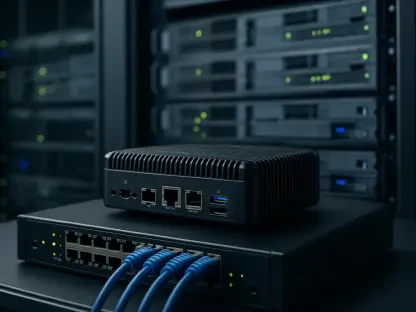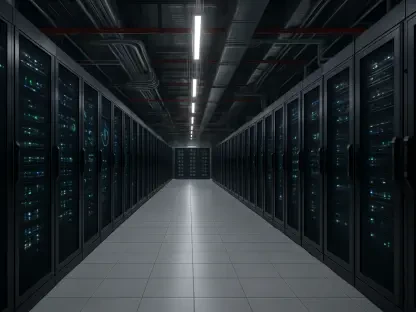In an era where seamless connectivity is no longer a luxury but a necessity, the networking industry stands at the forefront of technological transformation, shaping how individuals and businesses interact with the digital world. From rural landscapes yearning for reliable internet to urban households juggling dozens of connected devices, the demand for robust, accessible, and secure networking solutions has never been higher. PCMag, a respected authority in technology journalism, has extensively covered these shifts through detailed reviews, lab tests, and industry updates. Their insights provide a comprehensive look into the latest advancements, from satellite internet breakthroughs to cutting-edge Wi-Fi systems, while also addressing the challenges that accompany rapid innovation. This article synthesizes their findings into a cohesive narrative, exploring the trends, products, and external forces defining the networking landscape today. Readers will gain a clear understanding of how these developments impact daily connectivity, whether through a portable satellite dish or a powerful mesh router setup. The journey through this dynamic field promises to reveal not only the opportunities for enhanced communication but also the hurdles that must be overcome to ensure a truly connected future. Let’s dive into the key themes and innovations driving this vital sector forward.
Revolutionizing Remote Access with Satellite Internet
Satellite internet has emerged as a critical solution for bridging the digital divide, particularly in areas where traditional broadband remains out of reach. PCMag’s extensive reporting on SpaceX’s Starlink showcases its role as a pioneer in this space, delivering high-speed connectivity to remote and rural regions. The introduction of the Starlink Mini, a compact and portable dish priced at $299 in the US, marks a significant step toward making internet access mobile and convenient for travelers and off-grid users. Beyond its affordability, Starlink’s focus on reducing upfront costs through discounts and free rental programs in select locations demonstrates a commitment to accessibility. This approach is particularly impactful for communities previously limited by geography, offering them a lifeline to online education, remote work, and global communication. PCMag notes that while these initiatives are promising, potential subscribers should be mindful of terms such as mandatory equipment returns upon service cancellation, which could pose logistical challenges.
Further highlighting Starlink’s dominance, PCMag emphasizes the service’s strides in performance through upgraded infrastructure and equipment. Enhanced speeds and reliability position it as a formidable alternative to conventional internet options in underserved areas. This progress is not just about raw numbers; it reflects a broader industry shift toward ensuring that no corner of the globe remains disconnected. The ability to provide consistent service in challenging environments sets a benchmark for competitors and underscores satellite technology’s potential to reshape connectivity standards. However, as PCMag points out, the balance between innovation and user experience remains delicate, with ongoing improvements needed to address latency and coverage consistency for a seamless experience in all scenarios.
Enhancing Home Connectivity Through Wi-Fi Advancements
Home networking solutions are evolving to meet the escalating demands of modern, device-saturated households, and PCMag’s coverage offers valuable insights into these developments. Mesh routers, such as the Google Wi-Fi three-pack, are celebrated for their ability to eliminate dead zones across expansive areas, covering up to 4,500 square feet with strong, reliable signals. These systems cater to families and remote workers who rely on uninterrupted internet for streaming, gaming, and video conferencing. PCMag highlights the added value of smart controls that allow users to manage their networks effortlessly, often paired with attractive discounts during major retail events. This combination of performance and cost-effectiveness makes mesh technology a go-to choice for upgrading home Wi-Fi, reflecting a market trend toward user-friendly, scalable solutions that adapt to diverse living spaces.
Another focal point in PCMag’s analysis is the rise of Wi-Fi 6E technology, which introduces access to the less congested 6GHz band for faster speeds and reduced interference. Affordable tri-band routers, often priced under $100 during sales like Amazon’s Prime Day, bring this cutting-edge capability within reach of budget-conscious consumers. PCMag also provides practical guidance for addressing common issues like lag in busy households, suggesting actionable steps to optimize performance before escalating concerns to internet service providers. This focus on both innovation and troubleshooting underscores the industry’s dual emphasis on pushing technological boundaries while ensuring accessibility and usability for all users, regardless of technical expertise.
Navigating the Cost Landscape of Internet Services
The financial aspect of networking services plays a pivotal role in shaping consumer choices, and PCMag’s reporting reveals a complex interplay of rising costs and competitive offers. On one hand, major providers like AT&T are implementing price increases for fiber and internet plans, which may strain household budgets and prompt users to reassess their options. Such hikes reflect broader market pressures, including infrastructure investments and inflation, that impact service affordability. PCMag’s coverage suggests that while these adjustments are inevitable for some providers, they risk alienating customers in a highly competitive field where value for money is a top priority. This trend highlights the importance of transparency and communication from ISPs to maintain trust amid changing economic conditions.
On the flip side, PCMag spotlights efforts by satellite providers like Starlink to lower entry barriers through strategic promotions and discounted hardware available at major retailers such as Best Buy and Walmart. These initiatives contrast sharply with traditional ISP pricing models, offering consumers a chance to access advanced connectivity without prohibitive upfront costs. The availability of such deals during limited-time sales events adds urgency to the decision-making process, as noted in PCMag’s updates, encouraging quick action to secure savings. This dynamic illustrates a fragmented market where pricing strategies vary widely, creating both opportunities and challenges for users seeking reliable internet solutions that align with their financial realities.
Addressing Security Risks in Networking Infrastructure
As networking technologies expand, so do the security risks associated with them, a concern thoroughly explored in PCMag’s reporting. A particularly alarming finding is the prevalence of unencrypted satellite data transmissions over North America, encompassing sensitive information from mobile carriers and even military communications. This vulnerability exposes critical gaps in current protocols, raising urgent questions about data privacy and the potential for exploitation by malicious actors. PCMag’s insights stress the need for robust encryption standards across satellite networks to safeguard against breaches that could have far-reaching consequences. The scale of this issue serves as a wake-up call for industry stakeholders to prioritize security alongside performance in their innovation efforts.
Beyond technical vulnerabilities, PCMag delves into societal threats to networking infrastructure, such as arson attacks on 5G towers in New Zealand driven by unfounded conspiracy theories about health risks. These incidents reveal how misinformation can translate into real-world damage, disrupting essential services and endangering public safety. Addressing such challenges requires a multifaceted approach, combining technological defenses with public education campaigns to counter false narratives. PCMag’s coverage underscores that while advancements in connectivity are vital, they must be accompanied by efforts to build trust and awareness among communities to prevent societal backlash from undermining progress.
Balancing Environmental and Societal Challenges
Networking infrastructure faces significant external pressures, and PCMag’s reporting sheds light on environmental disruptions that threaten global connectivity. A striking example is the severed underwater cable in Tonga, which isolated the region from the internet and highlighted the fragility of critical communication links. Such events serve as a stark reminder of how natural disasters can undo years of technological progress in an instant, emphasizing the need for resilient, redundant systems to ensure continuity. PCMag’s analysis points to the importance of international cooperation and investment in durable infrastructure to mitigate the impact of such catastrophes, especially in vulnerable areas prone to environmental hazards.
Societal and regulatory factors also complicate the networking landscape, as evidenced by PCMag’s coverage of rocket launch approvals for SpaceX despite environmental objections. While these decisions enable the expansion of satellite services, they spark debates over ecological sustainability and long-term consequences. Balancing technological growth with environmental stewardship remains a contentious issue, with no easy answers. PCMag’s insights suggest that industry leaders and policymakers must engage in ongoing dialogue to address these tensions, ensuring that the drive for connectivity does not come at an unsustainable cost to the planet or local ecosystems.
Regulatory Changes and Their Implications
Regulatory frameworks are pivotal in shaping the networking sector, and PCMag’s updates reveal potential shifts that could influence consumer experiences. The Federal Communications Commission’s consideration of relaxing broadband transparency rules, often referred to as “nutrition labels,” might reduce the clarity with which providers disclose service details. This change could complicate how subscribers evaluate plans, potentially leading to confusion over costs, speeds, and limitations. PCMag’s reporting indicates that such policy adjustments, while possibly easing burdens on ISPs, risk eroding trust at a time when informed decision-making is crucial for navigating a crowded market.
The broader implications of regulatory changes extend to how they shape competition and innovation within the industry. PCMag notes that transparent policies have historically empowered consumers to hold providers accountable, fostering a market where quality and value are prioritized. A rollback in these standards could tilt the balance, giving larger entities an edge while smaller players struggle to communicate their offerings effectively. Staying abreast of these developments is essential for anyone invested in the networking space, as regulatory decisions often set the tone for how technology evolves and who ultimately benefits from its advancements.
Envisioning the Future of Hybrid Connectivity
Looking toward the horizon, PCMag’s coverage points to transformative trends that promise to redefine networking through hybrid solutions. Projects aiming for satellite-to-phone connectivity by 2026 mark a bold leap toward integrating mobile and space-based technologies, potentially eliminating the need for separate terrestrial networks in many scenarios. This convergence could revolutionize how people stay connected, especially in remote or disaster-stricken areas where traditional infrastructure fails. PCMag’s insights highlight the ambition behind such initiatives, suggesting that seamless, ubiquitous access might soon become a reality rather than a distant dream.
Complementing these developments, the sheer scale of next-generation satellite designs signals an era of unprecedented capability in space-based internet. PCMag’s reporting on these advancements reflects an industry consensus that combining terrestrial, satellite, and mobile systems is the path forward to meet escalating global demand. This hybrid approach not only addresses current connectivity gaps but also prepares for future challenges posed by population growth and technological reliance. As these innovations unfold, they carry the potential to reshape daily interactions with technology, making staying connected an effortless, integral part of life across diverse environments.
Reflecting on Networking’s Path Forward
Reflecting on PCMag’s comprehensive exploration of networking trends, it becomes evident that the industry has reached a pivotal moment marked by remarkable innovation and persistent challenges. Satellite internet has proven its worth in connecting the unconnected, while Wi-Fi advancements have transformed homes into hubs of seamless activity. Yet, security vulnerabilities and environmental disruptions pose real threats, demanding attention and action from all stakeholders. Pricing dynamics and regulatory shifts further complicate the landscape, influencing how solutions are accessed and perceived.
Moving ahead, the focus should shift to actionable strategies that fortify infrastructure against risks while embracing hybrid connectivity models. Industry leaders must prioritize encryption and public education to combat vulnerabilities and misinformation. Policymakers need to strike a balance between fostering innovation and protecting consumer interests through clear, fair regulations. For consumers, staying informed about evolving technologies and market trends will be key to making empowered choices. Ultimately, the path to a fully connected world hinges on collaboration, ensuring that the strides made in networking continue to benefit society without compromising security or sustainability.









